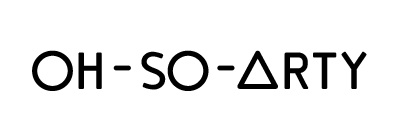Nothing makes a statement about the value of art and culture in Jerusalem quite like The Israel Museum. The 20-acre campus, originally design by Alfred Mansfeld and Dora Gad, was founded in 1965. Since then, the Museum has grown dramatically, establishing itself as the largest cultural institution in the State of Israel.
Turning the World Upside Down by Anish Kapoor Pic: Elie Posner
Under the direction of some of the most knowledgeable, innovative and enthusiastic team members, and with the help of tremendous international and national support, The Israel Museum is regarded among the world’s leading art and archaeology museums. Here is a place where one can literally take a comprehensive journey through history vis-à-vis art.
Starting with the Billy Rose Art Garden, a Japanese Zen inspired sculpture garden, the Museum showcases works from modern masters like Pablo Picasso and Claes Oldenburg alongside site-specific contemporary pieces, from widely recognized names like James Turrell, Sol LeWitt and Micha Ullman.
The Shrin of The Book, Photo courtesy of the Israel Museum, Jerusalem
Beyond this, visitors can view the Model of Jerusalem in the Second Temple Period as well as the magnificent Shrine of the Book, by Armand Bartos and Frederick Kiesler. The Shrine of the Book is significant in that has a modern, geometric exterior which majorly juxtaposes its contents—exceptional archaeological finds such as the Dead Sea Scrolls.
Passages into to the museum’s main building are adorned with exciting commissioned works such as Whenever the Rainbow Appears by Olafur Eliasson and Turning The World Upside Down by Anish Kapoor. It is through here that one will discover displays from the Museum’s Jewish Art and Life, Archaeology and Fine Art departments. Fine Art collections cover works from European, non-Western, modern and Israeli art.
Whenever the Rainbow Appears by Olafur Eliasson and 6th century mosaic floor found in Beit Shean, Photo by Elie Posner
Understanding the museum’s focus on history, and the venerable depth of Jerusalem’s history, it’s easy to understand why having a strong program in contemporary art is so important and exciting for the Museum, and this has been heavily pursued by the institution since its inception. With the establishment of the Department of Contemporary Art in 1982, a new dialogue was created in the Museum’s galleries by collecting and exhibiting works which emphasize young emerging artists, installations, three-dimensional works, video and photograph-based works who. A few highly recommended contemporary art exhibitions on display now are Ron Amir: Doing Time in Holot, Hadassah Goldvicht: Jonah and Roey Heifetz: Victoria (at the Ticho House gallery).
View of Modern Art Gallery, photo by Elie Posner
After a three year renovation in 2010, spearheaded by director James S. Snyder and designed by James Carpenter Design Associates and Efrat-Kowalsky Architects, the Museum’s exhibition space expanded to more than 200,000 sq. meters and its collection nearly doubled. Without question, these changes have enhanced the overall experience of The Israel Museum—unifying the universal span of its collections and allowing for important changing exhibitions.
Speaking of new strides, The Israel Museum has just announced their decision to appoint Eran Neuman as its new Director. Neuman currently serves as the Director of the David Azrieli School of Architecture at Tel Aviv University and will assume his position at the Museum during February, 2017. Neuman succeeds Snyder, who is ending his 20-year tenure as Director to assume a newly created role of International President.
Eran Neuman
Says Neuman about his new position, “I am honored to be joining the Israel Museum at such an important moment in its trajectory. I look forward to working with the outstanding team at the Museum and with its leadership to build upon the incredible accomplishments of my predecessor, James Snyder”.
- by Jenna Romano
Cover pic: Main entrance to the Israel Museum, including Menashe Kadishman's Suspense in foreground (photo by Tim Hursley)




